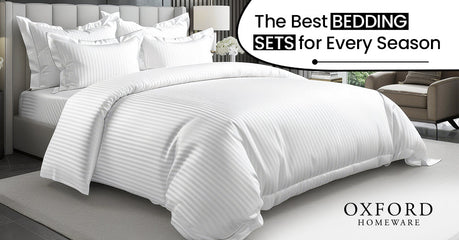The Ultimate DIY Guide To Installing Curtain Rods





Advantages Of Installing Curtain Rods By Yourself
Self-installation of curtain rods may be a rewarding and economical activity. DIY curtain rod installation has several advantages, including those listed below.
- Economical: Hiring a specialist to install curtain rods might be pricey. You may save personnel expenses and gain control over the resources you use by doing it yourself.
- Pride in abilities: Finishing a DIY project successfully might make you proud of your skills and accomplishments.
-
Placement control: By installing curtain rods yourself, you may decide where the rod will go and how your window treatment will generally appear. Make sure the length and width of your curtains are just right to get the desired effect.

15% OFF
GET FLAT 15% OFF ON YOUR FIRST PURCHASE
BLOG15 - Customization: You may alter the appearance and feel of your window treatment to suit your taste and style by placing curtain rods yourself.
- Learning new skills: Putting in curtain rods is a terrific opportunity to expand your DIY knowledge and acquire new abilities. This might inspire greater confidence to take on future home repair tasks.
Overall, installing curtain rods oneself may be financially and emotionally beneficial. Your home décor might benefit from an individual touch to make it particular to you.
Tools And Materials Required
You must acquire the appropriate equipment and supplies before beginning the installation procedure.
Essential Equipment
- Drill
- Screws
- Screwdriver
- Measuring tape
- Pencil
- Level
Essential Materials:
- Curtain rod
- Brackets
- Wall anchors (if needed)
You can finish the installation procedure efficiently if you have this equipment and supplies on hand.
Preparation For Installing Curtain Rod
It's crucial to prepare before you begin putting your curtain rods carefully.
- Measuring the window dimensions: To choose the right-sized curtain rod, measure the width of your window. Don't simply measure the glass; also measure the breadth of the window frame. This will guarantee that your curtains will completely enclose the window and prevent any openings for light from getting through.
- Selecting the proper curtain rod type: There are many different curtain rod kinds, including tension rods, single rods, double rods, and more. Select a kind that meets your demands and blends well with the room's design.
- Choosing where to position the rod: Choose the location for the curtain rod. Where exactly do you want it placed, above or just below the window sill? Do you like the curtains to hang merely on the window sill or to the floor as well? This will let you choose the curtain pole set with sparkling mosaic length and bracket location.
You can be sure you have the necessary supplies and equipment for the work, that your curtain rods will fit your window, and that they will complement your décor by following these steps before you begin.
Setting Up The Brackets
It's time to attach the brackets once you've prepared to install your curtain rods. Take these actions:
- Marking the bracket installation location: Use a pencil to indicate the bracket installation location. Verify that the markers are level and spaced correctly apart from the window frame.
- Drilling the holes: Drill holes where they have been designated using a drill bit that is just a little smaller than the screws that came with the brackets. Drilling should only be done straight and not too deep.
- Attach the bracket to the wall: Place the screws in the holes while holding the bracket over them to secure the bracket. Once the bracket is firmly fastened to the wall, tighten the screws. Make sure the bracket is straight and level by using a level.

Ensure the second bracket is level with the previous one before repeating the procedure. Repeat the procedure to install the second set of brackets if you install double rods. Following these instructions, ensure your brackets are firmly fastened to the wall and prepared to hold your curtain rod.
Attaching The Rod

The curtain rod should now be attached once the brackets have been placed. Take these actions:
- Taking measurements and, if necessary, cutting the rod: If your curtain rod is too long for your window, you may need to shorten it. After taking measurements, use a saw to cut the rod to the required length. To prevent your curtains from being snagged, be careful to file any sharp edges.
- Insert the rod into the brackets: Carefully slide one end into the first bracket and then the other into the second bracket. Check that the rod is upright and straight.
- Tightening the bracket screws to secure the rod: After the rod has been set up, the bracket screws need to be tightened to keep the rod in place. Make sure the rod is not dangling or loosely attached.
If installing two rods, install the second rod with the same steps. Following these instructions, you can ensure your curtain rod is firmly fastened to the brackets and prepared to support your curtains.
Hanging The Curtains
By hanging curtains, you may add seclusion, insulation, and flair to your windows. Here are some guidelines for hanging drapes:
- Picking the appropriate curtains: There are various drapes, including sheer, blackout extendable metal curtain pole set, thermal, and more. When selecting the ideal sort of curtains, consider the purpose they will serve and the design of your space.
- Attaching the curtain hooks: To enable your curtains to hang from the curtain rod, curtain hooks are little, often plastic, components that connect to the rear of your drapes. For every curtain panel, ensure you have the appropriate hooks and place them equally across the top of the panel.
- Hanging the curtains on the rod: Insert the rod into the brackets above the window to hang the curtains. Start at one end of the rod and work your way to the other while installing the curtain hooks. To guarantee that the curtains hang straight and evenly, spread the hooks equally throughout the length of the rod.
- Changing the curtains' length: If your curtains are excessively long, you may shorten them by hemming them or using curtain clips to fasten them to the correct length. If the curtains are too short, you may lengthen them by attaching a fabric panel at the bottom.

These instructions make it simple to hang curtains and give your space a final touch.
Installing Additional Brackets For Extra Support
Ensuring the curtain rod is securely supported is crucial while hanging curtains. In rare circumstances, more brackets could be required to provide further support. The following describes when and how to add extra brackets:
When And Why Extra Brackets Are Needed?
You may need to install extra brackets while hanging curtains for various reasons. For instance:
- Heavy curtains: You may need extra support to keep the curtain rod from drooping or collapsing when hanging heavy curtains, such as those made of velvet or thick fabric.
- Windows that are broader than typical: If your window is more significant than usual, you may require extra brackets to maintain the rod along its length.
- Uneven walls: Getting the rod to sit level could be challenging if your walls are uneven or slanted. The rod may be supported and levelled with the use of additional brackets.
Tips To Install Additional Brackets
Here's how to attach more brackets if you need more support:
- Gauge the space between the current brackets: Use a measuring tape to gauge the space between the current brackets. You may use this to decide where to put the extra brackets.
- Purchase the brackets:Get extra brackets that match the ones already in place. They will seem unified as a result of this.
- Indicate the location: Using a pencil, indicate where to attach the extra brackets. Make that the markings are level and spaced equally.
- Drill holes for the brackets: Using a drill, make holes where you indicated where the brackets should go.
- Put the brackets in place: Drive the supplied screws into the holes you bored in the brackets. Use the screws to fasten the brackets to the wall after that.
- Hang the curtains: Following the installation of the extra brackets, hang your curtains as usual.
Following these instructions, you may attach extra brackets for further support while hanging curtains. Your curtains will look fantastic and remain put if you do this.
Conclusion
Hanging curtains are quick and enjoyable to add design and seclusion to your house. You can quickly install a curtain rod and hang curtains by following simple steps. If required, slide the curtain hooks onto the rod and adjust the drapes' length. You may attach additional brackets to improve stability if more support is required.
A fun DIY project that quickly improves the appearance of your house is hanging curtains. You may save money on expert installation by doing it yourself, and you'll experience the advantages of designing a look uniquely you. Don't be frightened to give it a go and take advantage of DIY home decor's advantages.


